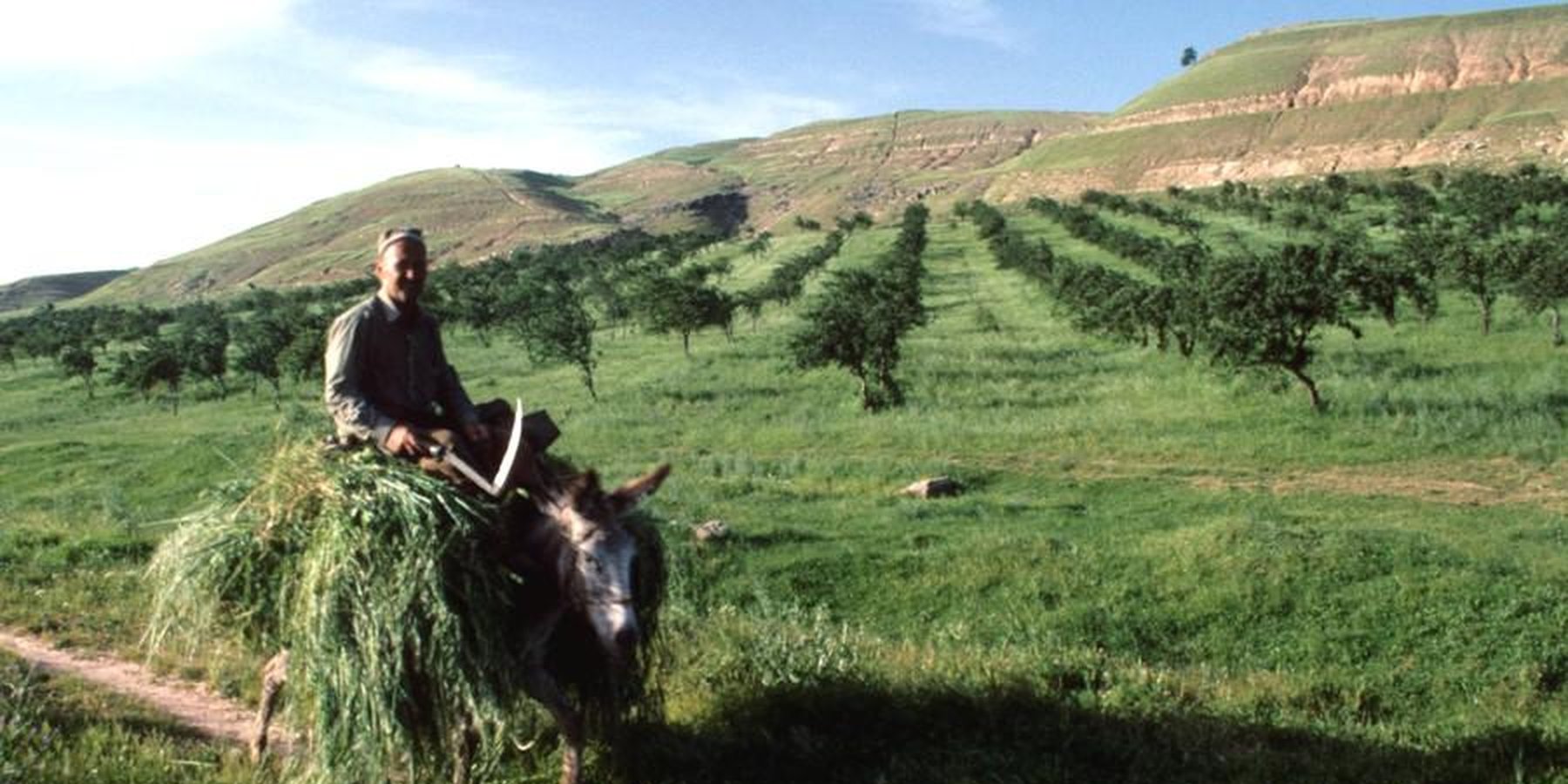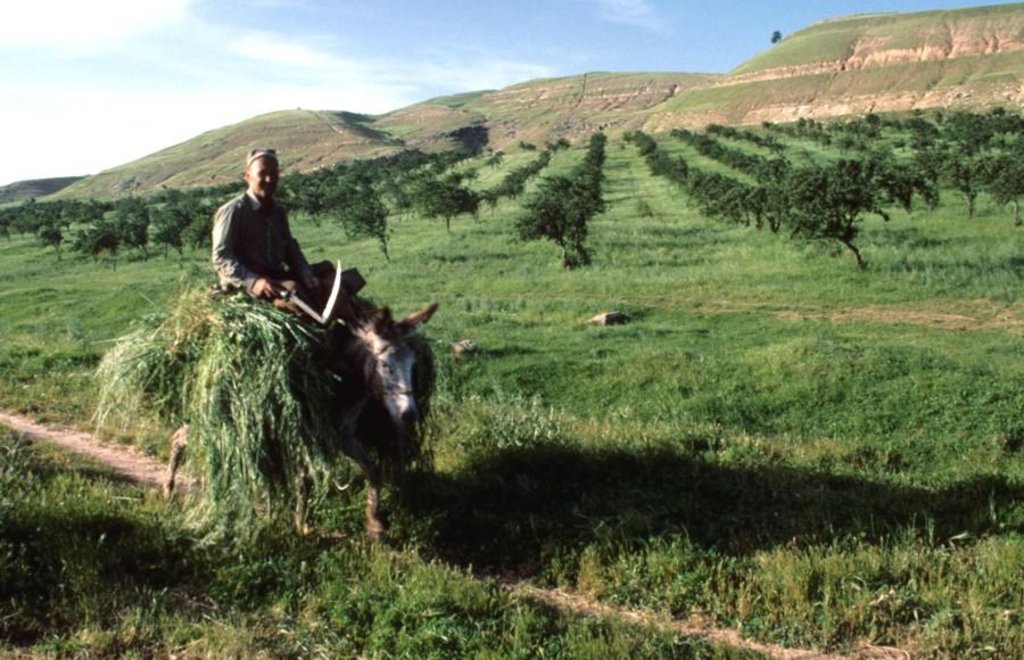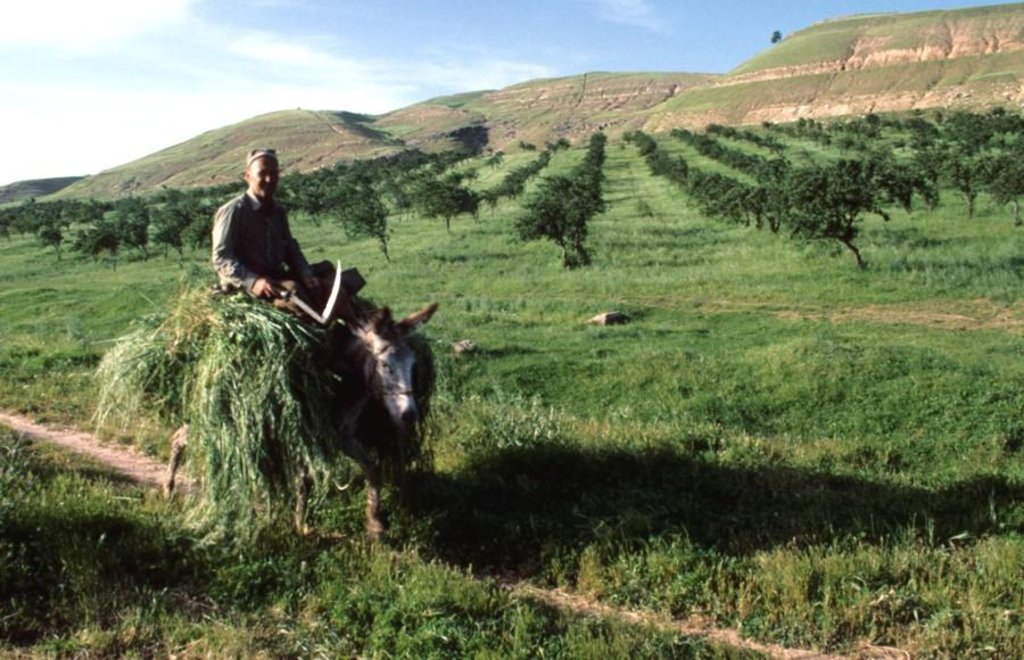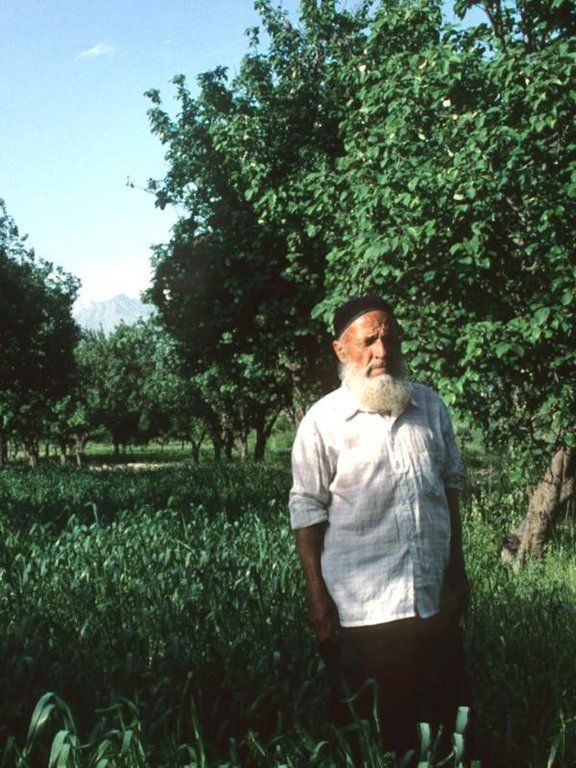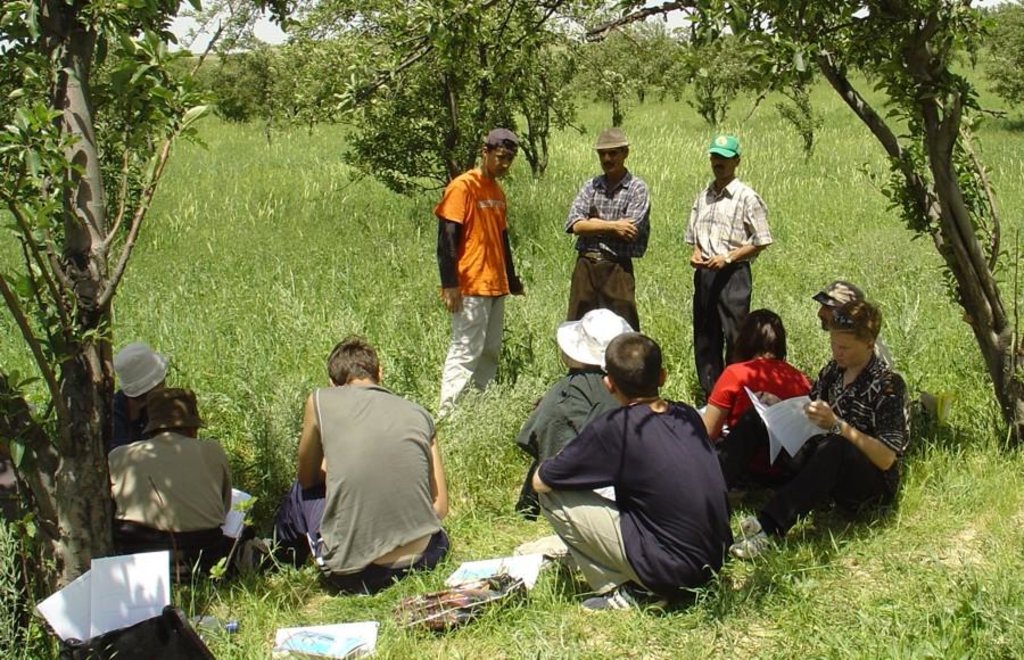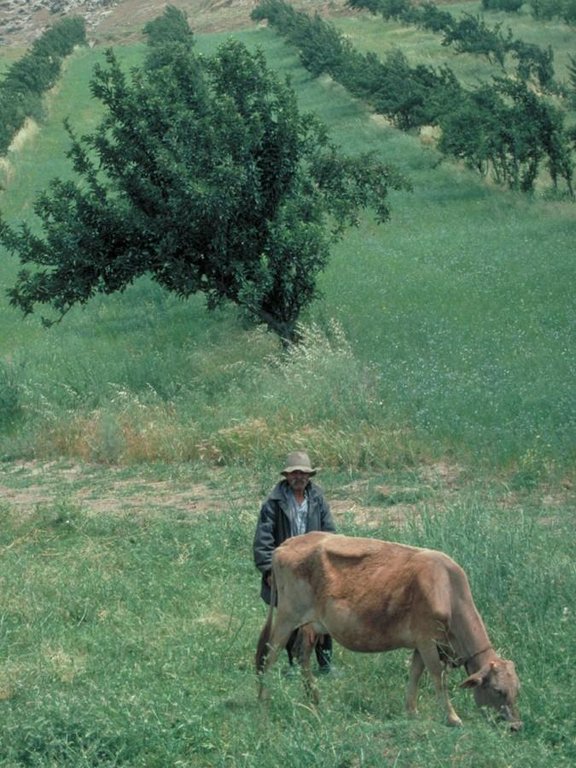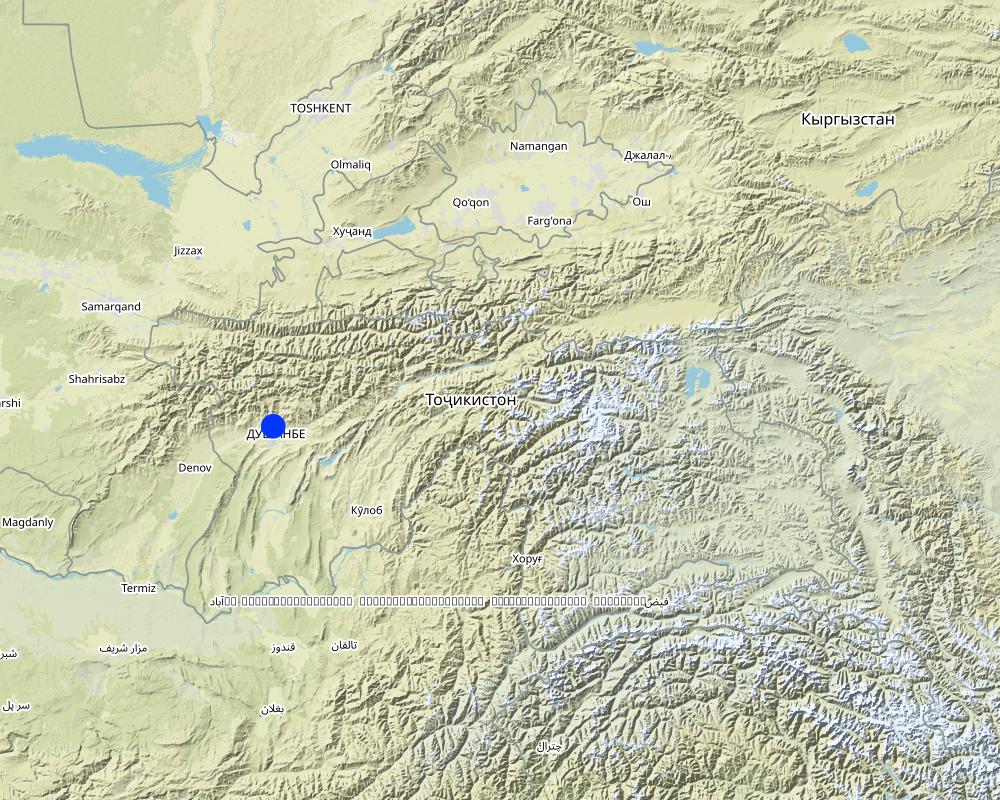Transition from a centralised regime to a local initiative [Tadjikistan]
- Création :
- Mise à jour :
- Compilateur : Sanginboy Sanginov
- Rédacteur : –
- Examinateurs : Alexandra Gavilano, David Streiff, Deborah Niggli, Joana Eichenberger
approaches_2660 - Tadjikistan
- Résumé complet en PDF
- Résumé complet en PDF pour impression
- Résumé complet dans le navigateur
- Résumé complet (non formaté)
- Transition from a centralised regime to a local initiative: 2 novembre 2021 (public)
- Transition from a centralised regime to a local initiative: 4 avril 2018 (inactive)
- Transition from a centralised regime to a local initiative: 7 août 2017 (inactive)
- Transition from a centralised regime to a local initiative: 5 juillet 2017 (inactive)
Voir les sections
Développer tout Réduire tout1. Informations générales
1.2 Coordonnées des personnes-ressources et des institutions impliquées dans l'évaluation et la documentation de l'Approche
Nom du projet qui a facilité la documentation/ l'évaluation de l'Approche (si pertinent)
Book project: where the land is greener - Case Studies and Analysis of Soil and Water Conservation Initiatives Worldwide (where the land is greener)Nom du projet qui a facilité la documentation/ l'évaluation de l'Approche (si pertinent)
Pilot Program for Climate Resilience, Tajikistan (WB / PPCR)Nom du ou des institutions qui ont facilité la documentation/ l'évaluation de l'Approche (si pertinent)
Soil Science Institute (Soil Science Institute) - Tadjikistan1.3 Conditions relatives à l'utilisation par WOCAT des données documentées
Le compilateur et la(les) personne(s) ressource(s) acceptent les conditions relatives à l'utilisation par WOCAT des données documentées:
Oui
1.4 Références au(x) questionnaire(s) sur les Technologies de GDT
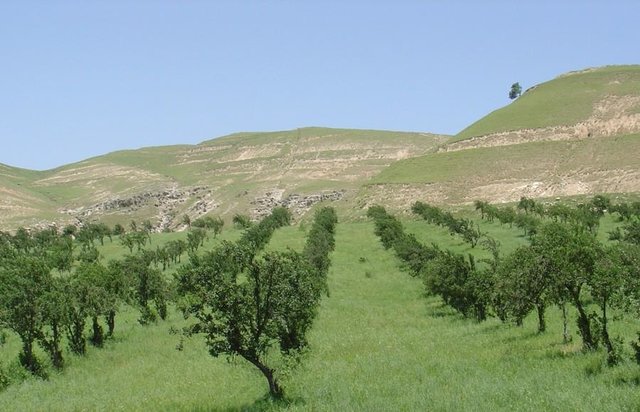
Orchard-based agroforestry [Tadjikistan]
An agroforestry system where legumes and cereals are planted in fruit orchards, giving simultaneous production and conservation benefits.
- Compilateur : Loes Masselink
2. Description de l'Approche de GDT
2.1 Courte description de l'Approche
A land use system established during the previous authoritarian regime of the Soviet Union is now being adapted to the farmers' needs via their own initiative.
2.2 Description détaillée de l'Approche
Description détaillée de l'Approche:
Aims / objectives: This case study compares two approaches which both contributed to the development of the current orchard-based agroforestry system: (1) Soviet approach: the previous state-run dictatorial system of the soviet times and (2) Farmers initiative: the current bottom-up approach. Farmers from the hilly Faizabad region with its deep and highly erodible loess soils had traditionally combined the cultivation of beans and wheat with fruit trees. During the 1980s the Soviet administration decided to intensify apple production in this area and to establish orchards on a large scale, making use of the well suited environmental conditions. The system introduced, comprised of densely planted purestand orchards, mechanically constructed terraces (where the slopes required this), and an irrigation system. Establishment was conducted through a top-down/authoritarian approach, and all inputs for implementation and maintenance were provided by the state. Farmers worked as employees on the state farms and received cash wages.
Methods: After the collapse of the Soviet Union and the start of the civil war, Tajikistan suffered from acute food shortages. In 1993, the Tajik government lifted the prohibition on planting wheat in rainfed areas. Farmers renting the land of the former state farms began to revert to intercropping annual crops, mainly wheat and beans, between thinned rows of apple trees. This was for both household use and for sale at the market. The initiative came from the farmers, and reflected the traditional system of production. However the pumping station and irrigation system have not been working for the last 10 years and therefore supplementary irrigation has not been available. In contrast to former times, decision-making, management activities, and provision of inputs/finance are all carried out by the land users themselves. In some cases, marginal farmers received incentive support from NGOs or from the World Food Programme. Systematic assistance from extension services, financial support to purchase pesticides or fertilisers, and investment to restore the irrigation system would all help to improve the agroforestry system and thus increase yields.
2.3 Photos de l'approche
2.5 Pays/ région/ lieux où l'Approche a été appliquée
Pays:
Tadjikistan
Région/ Etat/ Province:
Faizabad
Map
×2.6 Dates de début et de fin de l'Approche
Indiquez l'année de démarrage:
1993
2.7 Type d'Approche
- traditionnel/ autochtone
2.8 Principaux objectifs de l'Approche
The previous Soviet approach aimed to increase apple production in a region with ideal environmental conditions. The current approach used by farmers aims to make more intensive use of agricultural lands through an agroforestry system, and especially to provide food security by growing annual crops between the trees.
The SLM Approach addressed the following problems: - Soviet times: the original problems addressed by the authorities during the soviet era were how to increase agricultural production, without consideration of the needs of the local rural population. - Post-soviet period: in 1993, when the soviet era ended, and the prohibition on cultivation of wheat was lifted, the underlying problem was a shortage of food, especially of wheat.
2.9 Conditions favorisant ou entravant la mise en œuvre de la(des) Technologie(s) appliquée(s) sous l'Approche
disponibilité/ accès aux ressources et services financiers
- entrave
1) Soviet Approach: The establishment and maintenance of the irrigation system, terraces and the orchards themselves required high financial input.
2)Farmers' initiative: Lack of funds for fertilizers, manure (which is burned as fuel for heating) and pesticides.
Treatment through the SLM Approach: 1) Equipment, seedlings and salaries were all provided by the central Soviet state.
2) Improved fertility management: farmers developed cost-effective practices such as crop rotation and fallow periods etc.
cadre juridique (régime foncier, droits d'utilisation des terres et de l'eau)
- entrave
The existing land ownership, land use rights / water rights hindered a little the approach implementation Allowing cropping on the farms was the first step; then land use rights were moved from state to individual farmers. While those orchards, which are still managed as state farms, are often not well looked after, renting of land and issuing of landholder certificates, generally leads to improved orchard management. However, access to land belonging to state farms (through rental agreements) is limited.
3. Participation et rôles des parties prenantes impliquées dans l'Approche
3.1 Parties prenantes impliquées dans l'Approche et rôles
- exploitants locaux des terres / communautés locales
- enseignants/ élèves/ étudiants
- gouvernement national (planificateurs, décideurs)
3.2 Participation des exploitants locaux des terres/ communautés locales aux différentes phases de l'Approche
| Participation des exploitants locaux des terres/ communautés locales | Spécifiez qui était impliqué et décrivez les activités | |
|---|---|---|
| initiation/ motivation | aucun | Involvement during the current approach: self-mobilisation, farmers' initiative to increase crop production by intercropping in orchards |
| planification | aucun | Involvement during the Soviet approach: none Involvement during the current approach: farmer's are fully involved using their own initiatives. |
| mise en œuvre | aucun | Involvement during the Soviet approach: payment for casual labour. Involvement during current farmers' initiative: interactive/self-mobilisation, responsibility for all steps, technical assistance from extensionists. |
| suivi/ évaluation | aucun | Involvement during the Soviet approach was interactive, via observations, public meetings, workshops, etc. Involvement during current farmer's initiative: includes self-mobilisation, interactive, responsibility for all the steps, technical assistance from external sources. |
| Research | aucun | Involvement during the Soviet approach was passive: technology development in the Faizabad Horticulture Institute. Involvement during current farmers' initiative: none. |
3.4 Prises de décision pour la sélection de la Technologie/ des Technologies
Indiquez qui a décidé de la sélection de la Technologie/ des Technologies à mettre en œuvre:
- principalement les exploitants des terres soutenus par des spécialistes de la GDT
Expliquez:
Soviet approach: decisions made by the state and local authorities. Current farmer's initiative: decisions made mainly by land users themselves supported by specialists.
Decisions on the method of implementing the SLM Technology were made by mainly by land users supported by SLM specialists. Soviet approach: decisions made by technical specialists. Current farmer's initiative: decisions made mainly by land users supported by agricultural extension service (technical assistance).
4. Soutien technique, renforcement des capacités et gestion des connaissances
4.1 Renforcement des capacités/ formation
Une formation a-t-elle été dispensée aux exploitants des terres/ autres parties prenantes?
Oui
Thèmes abordés:
Training was provided on-the-job, by public meetings and through courses. Training focused on improving irrigation, tree planting practices and tree management. Training conducted during the establishment of the orchards was useful and adequate. No training was given (naturally) in intercropping of wheat and other cereals between the rows of apple trees the farmers??? initiative. However in order
4.2 Service de conseils
Les exploitants des terres ont-ils accès à un service de conseils?
Oui
Décrivez/ commentez:
Key elements: For running the orchards during Soviet times a top-down/authoritarian approach was used
4.3 Renforcement des institutions (développement organisationnel)
Des institutions ont elles été mises en place ou renforcées par le biais de l'Approche?
- non
4.4 Suivi et évaluation
Le suivi et l'évaluation font ils partie de l'Approche? :
Oui
Commentaires:
bio-physical aspects were ad hoc monitored by 0 through observations; indicators: erosion and crop growth - sedimentation and plant development
economic / production aspects were regular monitored by 0 through measurements; indicators: farmers' yield and profit
area treated aspects were ad hoc monitored by 0 through measurements; indicators: None
no. of land users involved aspects were ad hoc monitored by 0 through observations; indicators: None
There were no changes in the Approach as a result of monitoring and evaluation: None under either.
4.5 Recherche
La recherche a-t-elle fait partie intégrante de l’Approche?
Oui
Donnez plus de détails et indiquez qui a mené ces recherches:
During the original establishment of the orchards, research was conducted. For the new system of intercropping with wheat, research contributed by providing support with respect to choice of varieties.
5. Financement et soutien matériel externe
5.1 Budget annuel de la composante GDT de l'Approche
Commentez (par ex. principales sources de financement/ principaux bailleurs de fonds):
Approach costs were met by the following donors: local community / land user(s) (by the farmer's initiative): 100.0%
5.2 Soutiens financiers/ matériels fournis aux exploitants des terres
Les exploitants des terres ont-ils reçu un soutien financier/ matériel pour la mise en œuvre de la Technologie/ des Technologies?
Non
5.4 Crédits
Des crédits ont-ils été alloués à travers l'Approche pour les activités de GDT?
Oui
Spécifiez les conditions (taux d'intérêts, remboursements, etc.):
Repayment conditions: For the original establishment of the orchards loans were provided by the state at a very low interest rate. Currently, for cultivating cereals and legumes, farmers have access to loans, but the interest rate is very high..
6. Analyses d'impact et conclusions
6.1 Impacts de l'Approche
Currently: moderately positive impact on soil and water conservation through the agroforestry system.
Did other land users / projects adopt the Approach?
- Non
- Oui, un peu
- Oui, modérément
- Oui, beaucoup
None known.
6.2 Principale motivation des exploitants des terres pour mettre en œuvre la GDT
- augmenter la production
This case illustrates the challenges in the transition from state-run large-scale farming to individual management of smaller units. In this case, soviet Tajikistan had established pure-stand orchards. However, in response to acute food shortage during the civil war, farmers started to intercrop wheat and beans in their orchards: a better all-round production/conservation system.
6.3 Durabilité des activités de l'Approche
Les exploitants des terres peuvent-ils poursuivre ce qui a été mis en œuvre par le biais de l'Approche (sans soutien extérieur)?
- non
Si non ou incertain, spécifiez et commentez:
The Soviet approach of orchards managed through state farms effectively died out with the collapse of the Soviet Union: the irrigation system ceased to function and inputs were not provided anymore by the state. Furthermore, the land use system was not adequate.
6.4 Points forts/ avantages de l'Approche
| Points forts/ avantages/ possibilités du point de vue du compilateur ou d'une autre personne ressource clé |
|---|
| Farmer's initiative: Farmers get diversified and additional products (grain, apples, beans, hay, etc). (How to sustain/ enhance this strength: The government should support the farmer's initiatives. The marketing system for selling fruits should be better developed.) |
| Farmer's initiative: Farmers themselves are finding a way out of the poverty trap. (How to sustain/ enhance this strength: Land reform should be improved and every farmer should be eligible for land certificates/titles.) |
| Soviet approach: Well managed and controlled land use system with efficient irrigation system, high production, ensured maintenance, provision of fertilisers and technical assistance. |
6.5 Faiblesses/ inconvénients de l'Approche et moyens de les surmonter
| Faiblesses/ inconvénients/ risques du point de vue du compilateur ou d'une autre personne ressource clé | Comment peuvent-ils être surmontés? |
|---|---|
| Farmer's initiative: Further extension of the agroforestry system is limited without support from the extension service | The extension service should provide more inputs. |
| Farmer's initiative: Land use rights: as long as the land still belongs to the state, people have very little motivation to improve it | Privatise the land. |
| Soviet approach: No diversity, mono-cropping system aimed at maximised production; as soon as state support ceased, the system collapsed. |
Liens et modules
Développer tout Réduire toutLiens

Orchard-based agroforestry [Tadjikistan]
An agroforestry system where legumes and cereals are planted in fruit orchards, giving simultaneous production and conservation benefits.
- Compilateur : Loes Masselink
Modules
Aucun module trouvé


